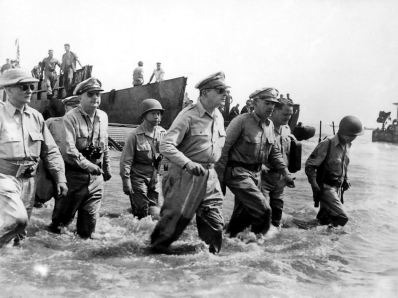Despite being a relatively small country, the Philippines is home to hundreds of different resources that are deemed valuable by some countries during the Middle Ages up to the present. In addition, the country also serves as the perfect gateway for other colonizing countries in the past to invade or colonize nearby countries in Asia, since the Philippine is located in the middle of East Asia that is accessible through ships. Because of its resources and location, the Philippines has been the location to some of the most gruesome and violent wars in history wherein several countries have fought for its right to rule the country. Here are brief details about the wars that have been fought in Philippine soil.
The Philippine Revolution
The Philippines Revolution was a war that was fought by Filipino insurgents to gain their freedom from the Spanish Empire. The war lasted two years, with it beginning on August 23, 1896 when the Spanish authorities discovered the existence of the Katipunan, a secret organization led by Andres Bonifacio that is growing in numbers due to its anti-colonial influence among many Filipinos. In a mass gathering that occurred in Caloocan, the Katipunan created a revolutionary government called “Haring BayangKatagalugan” that will replace the Spanish government once they win the war.
The two battles in Manila were a failure by the Katipunan, but the other battles that happened in Cavite that were led by Emilio Aguinaldo and Mariano Alvarez were a success. It is important to note that during those battles, the factions of Bonifacio, Alvarez, and Aguinaldo had different ideologies, thus creating a power struggle between the three leaders. Because Aguinaldo won most of the battles of the Katipunan, as well as having a more charismatic personality than Bonifacio, the members of the organization chose him to be the leader of the revolutionary government.
After Aguinaldo’s government was created, he and other important members of the Katipunan signed the Pact of Biak-na-Bato (December 14, 1897) with the representatives of the Spanish government in order to reduce the hostilities in the country. The pact forced Spain to give amnesty and monetary indemnity to the Philippines in exchange for the exile of Aguinaldo and other members of the revolutionary government in Hong Kong.
During the Spanish-American War in 1898, the American won the Battle of Manila Bay, thus earning them the rights to seize control of Manila. Aguinaldo then allied with America and came back to the Philippines to official declared the independence of the Philippines from Spanish rule on June 12, 1898. However, this declaration was not recognized by Spain and the United States.
Philippine-American War
A year after Aguinaldo’s unofficial declaration, the Philippine-American War broke out, serving as a continuation to the Filipino people’s struggle to gain independence. The war started on February 4, 1899, a few months after the Treaty of Paris, which was signed by the United States and Spain that allowed the former to seize control of Cuba, Puerto Rico, Guam, and the Philippines. The Philippine government did not agree to the treaty, and this disagreement eventually escalated to the Philippine-American War.
The first battle of was the Battle of Manila in 1899, which resulted in the defeat of the Philippine government. The subsequent battles, which are the Battles of Caloocan, Second Battle of Caloocan, Capture of Malolos, and other major and minor battles were also a failure for the Philippine Government, although there are a few battles that they have won, like the Battle of Tirad Pass and the Battle of Paye. The war ended on July 2, 1902 with the victory belonging to the American forces, but there are still several Filipino factions that fought the Americans for a few more years after 1902.
Japanese Invasion in World War II
During World War II, the Japanese forces invaded the Philippines and engaged in a battle between the American and Filipino forces on December 8, 1941 to May 8, 1942. The Japanese forces started the invasion from Formosa (now Taiwan), which is to the north of the Philippines. Although they were outnumbered, the Japanese was able to win the battles that allowed them to go straight to Luzon and conquer the archipelago.
Luckily for the defending forces, the Japanese government believed that they won the battle and pulled out their best divisions and soldier in January 1942, thus leading to the American and Philippine forces to have four more months to plan defense strategies. Unfortunately, the battle officially ended on May 8, 1942 and the Philippines was then occupied by the Japanese government.
Two years after the start of the Japanese occupation, the American forces, with the help of surviving divisions and battalions of the Philippines, sought to regain the control of the country by performing amphibious landings (using ships) in Leyte and slowly regaining other territories in Visayas, Luzon, and Mindanao. Almost a year after the initial campaign by the American to liberate the Philippines, the Japanese government announced their surrender on August 15, 1945, after the American forces dropped two atomic bombs in the cities of Nagasaki and Hiroshima in Japan a few days earlier. With the announcement of the surrender, the Japanese soldiers in the Philippines retreated on September 2, 1945, thus officially ending the battle with the victory for the Americans and Filipinos.
It cannot be denied that the Philippines suffered devastating losses in these wars, as most of the battles resulted in their defeat. However, these battles also show the resilience of the Filipino people, as they will keep fighting for their freedom even if they are outnumbered.



